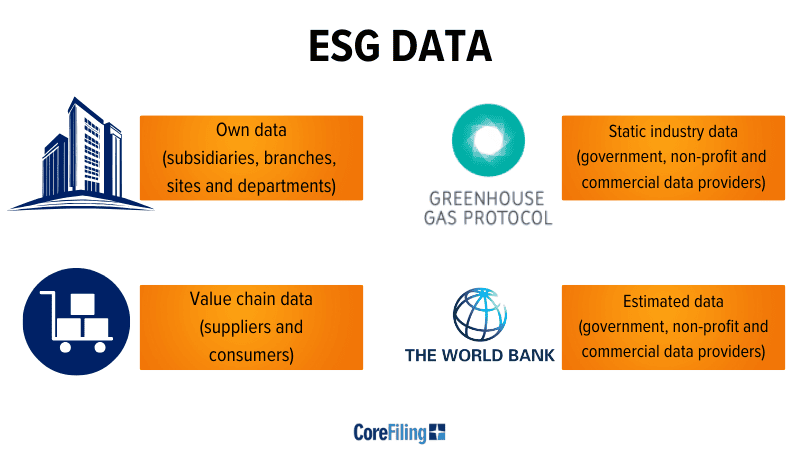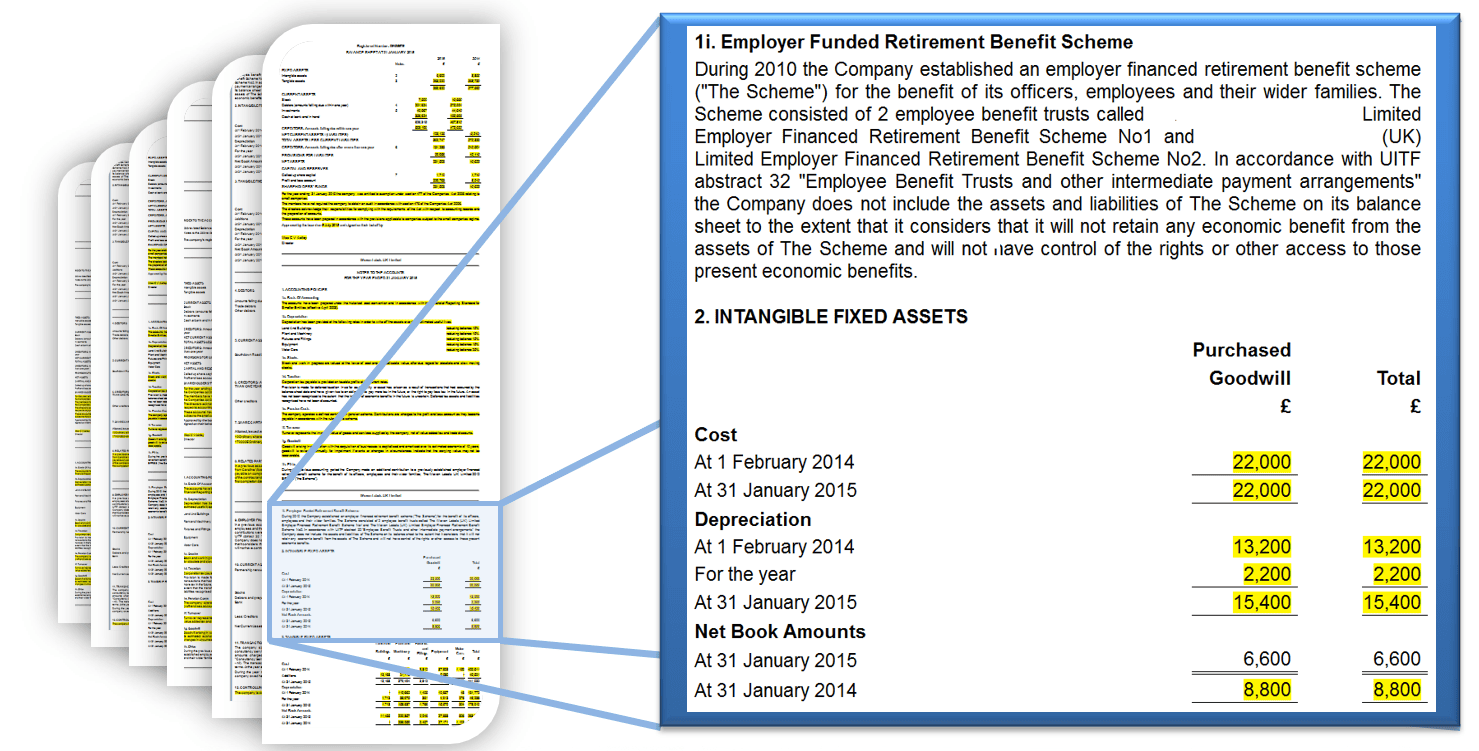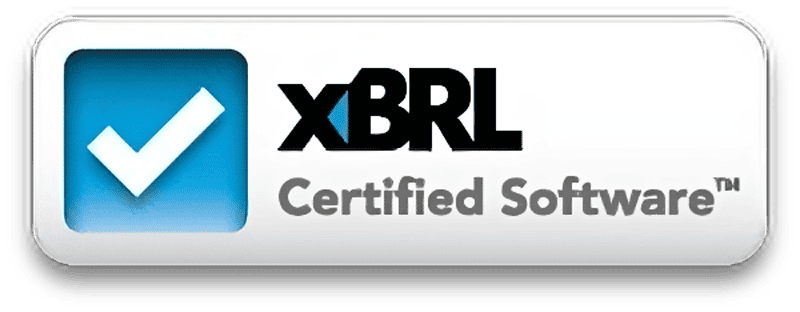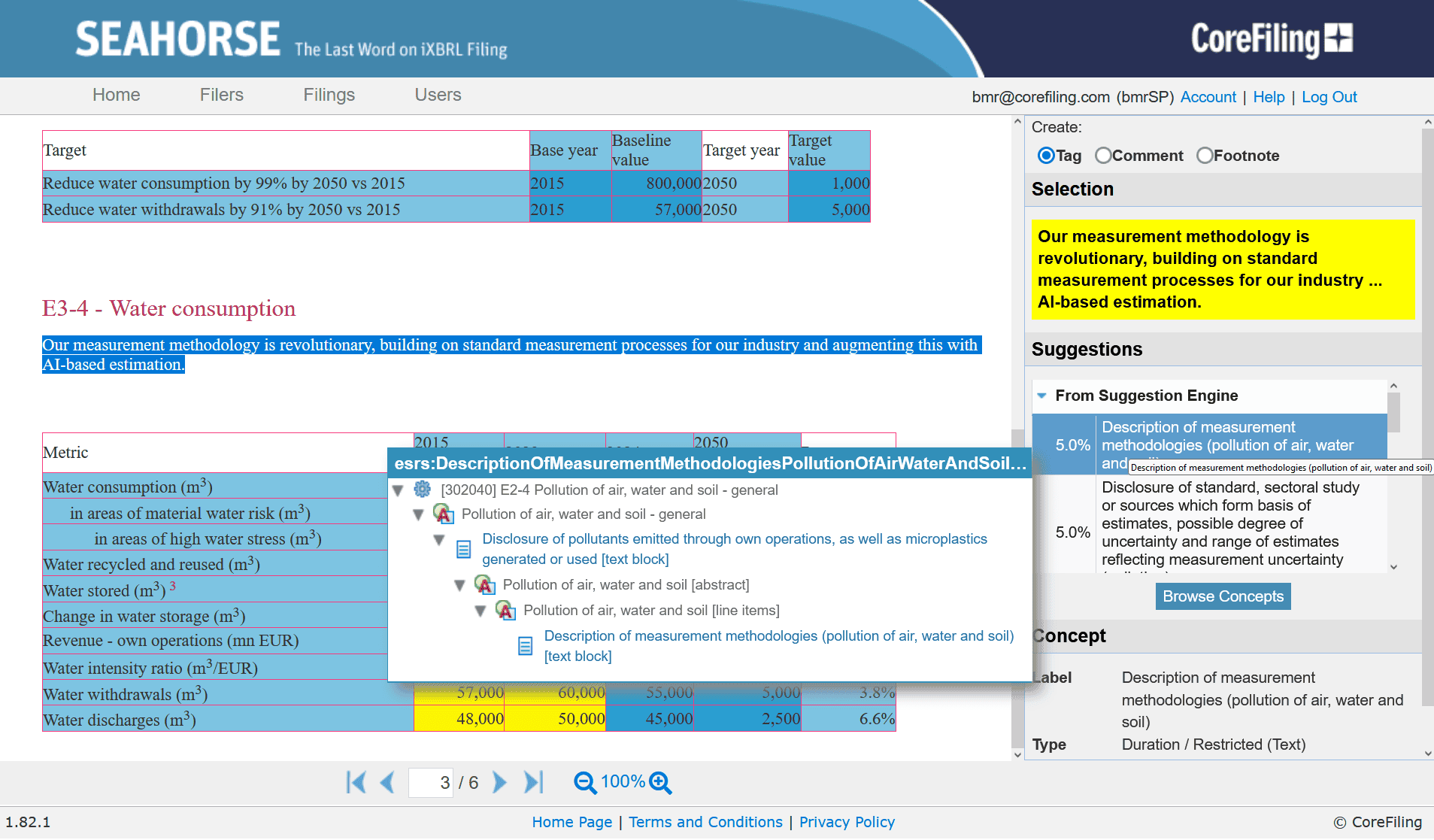Introduction
The Corporate Sustainability Reporting Directive (CSRD) introduces a common framework for EU sustainability reporting. The European Sustainability Reporting Standards (ESRS) are introduced to describe what data needs to be collected, managed and disclosed. Digital reporting in the ESEF format has been mandated to meet transparency and usefulness goals of the regulation. In addition, auditing of the data and reporting is required to ensure there is a level of trust in the data.
With a heavy emphasis on data and technical formats, it is an inevitably that software will be required to meet CSRD reporting requirements.
A myriad of companies have brought software to market to help companies meet their compliance requirements, but how do you know what you need, when you need it and what software delivers value while ensuring you are 100% compliant? This post covers these and provides useful questions to ask when buying solutions.
What is the Corporate Sustainability Reporting Directive (CSRD)?
The CSRD is a piece of European legislation that introduces new reporting requirements for thousands of EU and non-EU companies. Phasing-in of CSRD reporting started in 2024 and the full range of companies will be brought within scope by 2029.
Some aspects of CSRD compliance are fixed in the EU legislation, while others are left to the national supervisors to fully define. Compliance with CSRD includes:
- Who needs to report: All listed companies, all large EU companies and other non-EU companies with revenue derived from EU states and above a certain threshold must comply.
- What to report: The ESRS and the Article 8 XBRL taxonomies give the full range of CSRD reporting possible. Companies need to apply a double materiality assessment to identify which impacts they need to report on.
- Where to report: Disclosures must be made in the management report section of each company’s annual financial report. This is the document they would normally submit to their national company register.
- Format of the report: Reports must be published in the ESEF format. This is primarily HTML (the same language used to write web pages) for reading by people and with iXBRL tagging to make the reports computer readable.
- When to report: The CSRD says reports must be submitted no later than 12 months after year end, but this is subject to national law and often this timescale will be shorter.
- Oversight: CSRD reporting initially requires “limited assurance”, a term which is fully defined by the IAASB in ISAE 3000. Audit requirements will get increasingly more stringent over time.
- Enforcement: Enforcement of CSRD reporting is provided on a national level by a nominated national supervisor, usually the securities regulator. Fines and penalties are therefore expected to be commensurate with those currently imposed for stock market participation and reporting to the national company registry.
Related Article: Comprehensive guide on CSRD
European Sustainability Reporting Standards (ESRS)
The majority of disclosure requirements required under CSRD are described in the ESRS. This is a series of twelve disclosure standards covering Environment, Social and Governance (ESG) and cross-cutting impacts. The ESRS is published in textual form in delegated legislation and in digital form in the XBRL taxonomy (viewable in BigFoot, our community taxonomy browser).
The XBRL taxonomy defines the tags to be used in the digital report. It is authored by the European Financial Reporting Advisory Group (EFRAG) alongside the ESRS. The final ESRS will be incorporated into other corporate reporting by the European Securities and Markets Authority (ESMA) before being passed down to the national supervisors to define and collect CSRD data.
The EU Taxonomy “Article 8”
In addition to the ESRS, companies who were previously reporting under the Non-Financial Reporting Directive also need to report the alignment of their company’s activities with the green activities listed in the EU Taxonomy. Similar to the ESRS, this is published both in textual format in legislation and in digital format in an XBRL taxonomy. The Article 8 taxonomy will also be added to existing corporate digital reporting requirements by ESMA.
ESG Data
The data required by CSRD can be split into categories to better understand the data management challenge:

Own data originates in the company and concerns the direct activities of the company, its policies and targets. Relevant data must be collected from all departments, sites and branches and processed.
Value chain data originates in other companies that make up the business value chain. Both consumers and suppliers have data that needs to be collected and collated for reporting.
Static industry data is used to support standardised calculations, such as emissions factors when calculating greenhouse gas (GHG) emissions data.
Estimated data is used when a company cannot collect information about its upstream and downstream value chain. In this case, sector-average data and other proxies are allowed by the CSRD and the company must disclose details about estimates including sources of error from their use. Estimated data may originate from government sponsored resources such as world bank data sets or from an independent research firm.
European Single Electronic Format (ESEF)
The European Single Electronic Format is the mandatory format for all reports made under CSRD. It is a format which is both human readable (in a web browser) and computer readable as disclosures are marked-up with digital tags that enable extraction for computer-driven analysis.
The dual use corresponds to the two technologies used in the ESEF:

Why Businesses Need CSRD Software
CSRD brings two challenges from a technology point of view and there are software solutions for both of these challenges:
- Data collection and aggregation
- Creating the digital report in ESEF/iXBRL format
To add to this, there is additional value that software and services providers can deliver. Their ability to keep you up to date with the latest in CSRD reporting should not be underestimated. For example, at CoreFiling, is it our core business to be informed of reporting requirements and we track evolving legislation on behalf of our customers.
Software for Data Collection
Companies are expected to source primary data from within their company and externally, from their entire value chain. This is an area where large companies with lots of departments, sites or extensive value chains have significant challenges. In some cases this can appear as complex as the regulatory data collections themselves!
CoreFiling provide our Data Collection Portal and related modelling services to enable data collection using the same technology we provide to a broad range of national regulators.
Questions to ask around data collection include:
- How will collected data be made available for use?
- How easy it is to implement the solution?
- What are the options to submit the data?
- How can you define and update the data to be collected?
- How is aggregation carried out once data is collected?
Software to meet Digital Reporting Requirements
For report preparation, there are three solutions:
- Tagging software, used in-house
- Outsourcing (also typically using tagging software)
- Disclosure management
In the above, tagging software enables a user to convert a Word, PDF or InDesign report into HTML and then apply the required digital tags to the content to produce the ESEF report. This is commonly referred to as a “bolt-on” solution. Disclosure management software assists with the writing of the report as well.
In all cases, the minimum requirement to reliably create CSRD reports is to use software that carries the “Report Creation Software” certification. Look for the below mark and see the list of certified software on the XBRL International website. This not only ensures compliance with the format, but also that the software is capable of applying the data validation included in the taxonomy.

Digital Tagging with iXBRL Tagging Software
Tagging software is suitable for those who wish to have little to no impact on their current reporting process and the most cost effective means of being compliant. Using the software typically follows this process:
- Automatically convert the original report to HTML
- Apply the digital tags
- Validate and export the final report
With conversion and validation being automatic, most of the time is spent in the tagging stage. CoreFiling’s Seahorse software handles this using an AI assistant to help you select tags based on previous tagging decisions.
- How faithful is the final result to the original source document?
- What level of automation and assistance is there in applying tags?
- How easy it is to update the software if a taxonomy changes? (SaaS software wins hands down here)
- How easy it is to review the tagging that has been applied?
- How can you roll forward tagging decisions from year to year?
Outsourcing Tagging
It is sometimes preferable to use managed services for the tagging process. For example, tagging may be carried out by a specialist tagging service such as that provided by CoreFiling partners.
As well as keeping your existing process, using external services means that experts in CSRD tagging, with much more experience, can do the mark-up on your behalf.
Questions to ask tagging service providers include:
- How many iterations of the document are allowed?
- What is the turn around time for tagging?
- Does the provider document “judgement decisions”?
- What is available to help you review the tags that have been applied?
- How much quicker or easier will tagging be after the first year?
Often the above questions will be answered with reference to a service level agreement between you and the provider.
Disclosure Management Software
Disclosure management is an alternative to using bolt on tagging software that lets you write the report within the software instead of using word processing and/or graphic design applications. This may be suitable if you wish to change your reporting process to reduce the number of steps and increase automation.
Features of disclosure management software usually include being able to updates figures in the report from external sources and rich editing functionality similar to a word processor. CoreFiling integrates our tagging software with our partners’ disclosure management software to provide an integrated solution to that delivers best-in-class solutions to both content and tagging. Please contact us to find out more.
Frequently Asked Questions (FAQs)
Below are answers to some of the most commonly asked questions around CSRD software.
Why do Businesses need Reporting Software for CSRD Compliance?
CSRD compliance is simple not possible without software, either used by your company or others on your behalf. It is the only effective means to:
- Explore the ESRS and Article 8 digital taxonomies
- Produce technically compliant reports in the ESEF format
- Manage data collections, collation and other data management
- Manage the compliance process
- Save time over manual processes, usually based around Excel and email
What can you do with CSRD Reporting Software?
It is useful to consider reporting software starting from the final output. In this case, the minimum software required is tagging software, able to convert a finalised report in Word, PDF or InDesign into the digitally tagged ESEF format. For those willing to invest more, template-based solution will soon be available as will integrated solutions where the report is generated automatically.
Some processes will benefit from more software, providing features such as:
- Report authoring
- Data collection
- Automation of aggregation and calculations
- Internal ESG management
- Overall legal compliance (RegTech)
Companies will have to find a CSRD reporting process and solutions that meets their needs. Usually there will not be one piece of software that provides all required functions at the required level and time must be allotted to make good software choices.
How can I Ensure my Business is Ready for CSRD Reporting?
Asking yourself the difficult questions is a good way to ensure you are ready. If there are gaps, then software can help. Some questions are below to get you started:
- Do I know what I need to report, to whom and when?
- Do internal stakeholders understand the depth and breadth of the CSRD sustainability report?
- How will I collect and collate data from around my business and from the value chain?
- What areas are covered by existing systems and where do we need to procure software?



